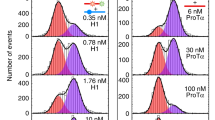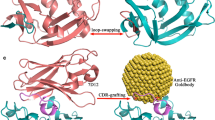Abstract.
The well-balanced stability of protein structures allows large-scale fluctuations, which are indispensable in many biochemical functions, ensures the long-term persistence of the equilibrium structure and it regulates the degradation of proteins to provide amino acids for biosynthesis. This balance is studied in the present work with two sets of proteins by analyzing stabilization centers, defined as certain clusters of residues involved in cooperative long-range interactions. One data set contains 56 proteins, which belong to 16 families of homologous proteins, derived from organisms of various physiological temperatures. The other set is composed of 31 major histocompatibility complex (MHC)–peptide complexes, which represent peptide transporters complexed with peptide ligands that apparently contribute to the stabilization of the MHC proteins themselves. We show here that stabilization centers, which had been identified as special clusters of residues that protect the protein structure, evolved to serve also as regulators of function – related degradation of useless protein as part of protein housekeeping.
Similar content being viewed by others
Author information
Authors and Affiliations
Additional information
Received: 25 August 2000 / Accepted: 6 September 2000 / Published online: 21 December 2000
Rights and permissions
About this article
Cite this article
Simon, Á., Dosztányi, Z., Magyar, C. et al. Stabilization centers and protein stability. Theor Chem Acc 106, 121–127 (2001). https://doi.org/10.1007/s002140000207
Issue Date:
DOI: https://doi.org/10.1007/s002140000207




